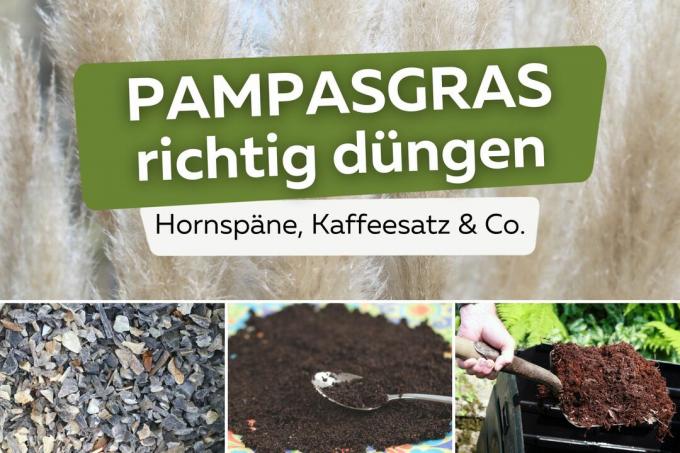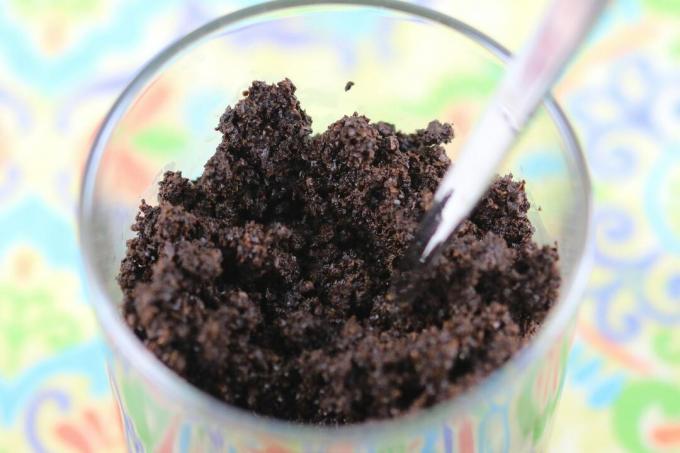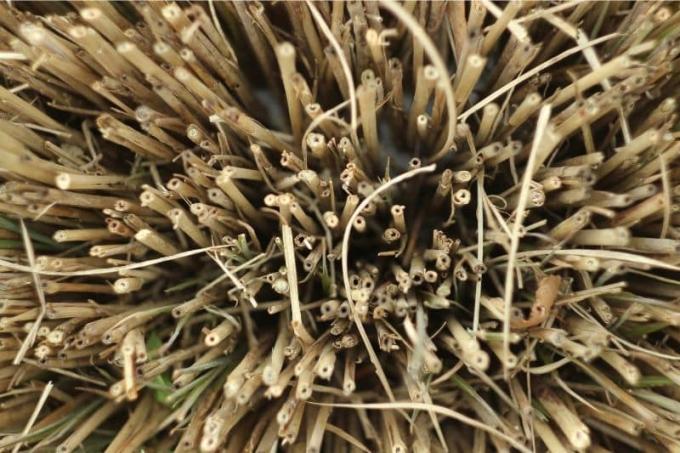
Pampas grass is one of the most magnificent and popular ornamental grasses in the garden and in the bucket. Depending on the variety, it can reach impressive sizes. We will tell you which nutrients you should fertilize pampas grass with.
In a nutshell
- regular fertilizer application is recommended
- prefer organic fertilizers
- mineral fertilizers for potted plants
- avoid excessive nitrogen content
Table of contents
- Why fertilize?
- Fertilize preferably organically
- mineral fertilizers
- Best time
- Dispense in the correct dose
- Fertilize bedding plants
- Fertilize in the bucket
- frequently asked Questions
Why fertilize?
Unlike other ornamental grasses, pampas grass requires sufficient nutrients to grow train their beautiful fronds and to grow optimally. Regular fertilizer application is therefore recommended. At some point, dead plant parts fall to the ground in their natural locations and thus return to the natural cycle as nutrients.

It's different in the home garden, here the grasses are cut back in spring, which deprives the plants of nutrients that have to be resupplied with fertilizer. Without additional nutrient input, the grass would wither. Read below what you should fertilize pampas grass with.
Fertilize preferably organically
Pampas grass planted in the garden is best fertilized with organic fertilizers. In addition to the main nutrients nitrogen, phosphorus and potassium, they contain important trace elements and minerals, improve soil fertility, ensure a lasting fertilizing effect and improve the storage capacity of the soil. Examples of good organic fertilizers are compost, horn shavings or coffee grounds.
- well rotted compost best fertilizer
- cheap, nutritious and environmentally friendly
- Horn shavings contain a lot of nitrogen, so use them carefully
- only suitable for outdoor fertilization
- only use coffee grounds outdoors
- is full of minerals, supports the acidity of the soil

Tip: Coffee grounds are considered a good fertilizer for plants that need a light acidic soil need, like the pampas grass. Incidentally, alpaca manure can also be a good fertilizer alternative, if you can get it.
mineral fertilizers
Mineral fertilizers in the form of liquid fertilizers are only recommended for pampas grasses in tubs. The bucket lacks the microorganisms that are required for the formation of humus. In addition, important minerals are washed out again and again during watering. Therefore, mineral liquid fertilizers are ideal here. The nutrients are immediately available, but are also quickly used up again, so that fertilization has to be done more frequently.
Best time
Depending on the condition of the soil, the first fertilization should be done when planting or in late spring before new growth. Just before flowering, it's time for a second fertilization. From August, fertilizing must be stopped completely. If you continue to fertilize, this will affect winter hardiness and make the pampas grass more susceptible to frost damage.

Tip: Leaves and brushwood, which you use as a cover to hibernate Mounds piled up around the grasses can be used as an additional small fertilizer dose if allowed to break down into mulch.
Dispense in the correct dose
Even if organic fertilizers rarely lead to over-fertilization, improper fertilization can impair the growth and stability of the grass. In most cases, too much nitrogen is responsible for this. It ensures that the plants quickly gain mass, but at the same time the stalks and leaves become unstable. It is all the more important to pay attention to the correct dosage and to administer it accordingly, depending on the type of fertilizer and cultivation form.
Fertilize bedding plants
compost and horn shavings
- until flowering fertilize regularly about once a month
- Do not spread compost too generously
- about 50 to 80 grams per square meter
- Administer horn shavings after pruning in spring
- about a heaping handful per plant and year
- Spread compost and horn shavings around the plant
- easily incorporated into the soil

A notice: Because of the comparatively high nitrogen content, you should only give horn shavings once a year.
coffee grounds
- allow to dry well before use
- Mold formation avoidable
- Apply once a month from May
- Depending on the size of the plant, the contents of one or more filter bags
- spread evenly over the root area
- easily incorporated into the soil
Tip: If you cover the root area with mulch after fertilization, the coffee grounds decompose more quickly and are available to the plant more quickly.
Fertilize in the bucket
After application, organic fertilizers such as compost, horn shavings or coffee grounds are decomposed by microorganisms so that they can be absorbed by the plants. This is hardly possible in the bucket, and the nutrient reserves are also exhausted much faster. Therefore, you should use mineral liquid fertilizers here. They are administered about every two weeks via the irrigation water. The dosage should be carried out according to the manufacturer's instructions.
frequently asked Questions
Blue corn is usually only suitable for plants with extremely high nutrient requirements and for those with deficiency symptoms. Over-fertilization, which on the one hand could lead to salination of the soil and on the other to disrupted water absorption, would be very easy. As a result, blueseed is not recommended for pampas grasses.
A nutrient deficiency is usually reflected in the fact that the stalks turn yellow prematurely or that there is no or no flowering at all. Then it should be fertilized.
Although pampas grass prefers slightly acidic soil, it is tolerant of lime as long as the lime content is not too high.



